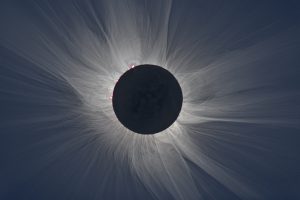Solar Eclipse Information

NOTICE: We do NOT have glasses for viewing the eclipse. We will be Live Streaming the event in the Library, both at the front desk and in the Friends learning Lab (with an HD projector).
The Eclipse is coming! Prime viewing at 2:44 pm for our area.
Watch the eclipse live starting at 11:45am from NASA’s website found here:
https://eclipse2017.nasa.gov/eclipse-live-stream
Make your own Pinhole Projector! Download this PDF from NASA’s website:
https://eclipse2017.nasa.gov/2d-pdf-files
Download an app to view it on a desktop or a mobile device:
https://eyes.jpl.nasa.gov/eyes-on-eclipse-web-detail.html
Huntingdon Valley Library does not have Solar Eclipse glasses. Here is a link to NASA’s web page with instructions on how to make your own Solar Eclipse Viewer: https://eclipse2017.nasa.gov/how-make-solar-eclipse-sun-viewer
Solar Eclipse Information and Display
According to the American Astronomical Society, “at any given location within the path of the Moon’s shadow, the total eclipse lasts at most 2 minutes 40 seconds — don’t be late! The Moon takes its first “bite” out of the Sun, marking the start of the partial eclipse, 1¼ to 1½ hours earlier, around 9:00 am PDT on the West Coast and 1:15 pm EDT on the East Coast. The Moon uncovers the last of the Sun’s bright face 2½ to 3 hours after that, around 11:30 am PDT on the West Coast and 4:15 pm EDT on the East Coast. This marks the end of the partial eclipse.”
Although total solar eclipses can happen once every two years around the world, this event marks the first total solar eclipse to occur in the continental U.S. since 1979, as reported by the Franklin Institute.
According to NASA, only fourteen states are in the path of totality and will be able to experience a total solar eclipse. The total solar eclipse will move from west to east starting with Oregon at 10:15am PDT and ending with South Carolina at 2:36pm EDT. The twelve states in between are Idaho, Montana, Wyoming, Nebraska, Kansas, Missouri, Iowa, Illinois, Kentucky, Tennessee, Georgia, and North Carolina. However, everyone else in the U.S. will get to see at least a partial eclipse. In the Philadelphia region, observers expect to see roughly 79% totality for the 2017 Solar Eclipse.
Please wear or use proper protective eyewear to view the eclipse or find an alternate method of viewing.
Check out these websites about the Solar Eclipse:
Franklin Institute: https://www.fi.edu/summer-of-space/eclipse
NASA: https://eclipse.gsfc.nasa.gov/SEmono/TSE2017/TSE2017.html
American Astronomic Society: https://eclipse.aas.org/eclipse-america/when-where
On August 21, 2017, NASA EDGE will join forces with the NASA Heliophysics Education Consortium, the University of Southern Illinois Carbondale, and Lunt Solar Systems to air a 4-hour 30-minute live webcast of the total solar eclipse from outside Saluki Stadium at Southern Illinois University Carbondale in Illinois.
The webcast will begin airing at 11:45 AM EDT (3:45 PM UTC). During course of the Megacast, NASA EDGE will be tracking the eclipse as it starts in Oregon and makes its way across the country ending in South Carolina. You will be introduced to some of the leading experts in the field of Heliosphysics and learn all about the Sun-Earth Connection. So if you’re unable to view the eclipse in person, don’t worry. Sit back, relax and let NASA EDGE turn your location into the best seat in the house!
• UStream Main Program Feed (link is external) http://www.ustream.tv/nasaedge
• YouTube (link is external) https://www.youtube.com/user/NASAedge
• Facebook https://www.facebook.com/nasaedgefan
(My thanks to Abington Township Public Library for compiling this useful information.)
